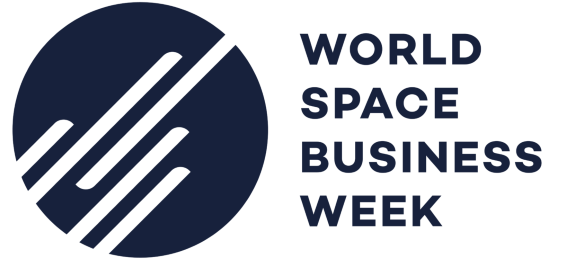World Satellite Business Week Portends Headwinds Facing the Industry
by Elisabeth Tweedie
Paris, France, September 30, 2024--Nathan de Ruiter, Partner and Managing Director Novaspace, opened this year’s World Space Business Week (WSBW), held as usual in Paris, with an interesting analogy. He compared Starlink to Apple, and the rest of the industry to Android. Not only is it an interesting analogy, it is one that cropped up many times, during WSBW and also during Strategies in Satellite Ground Systems (SSGS), sometimes explicitly and other times indirectly.
In common with Apple, Starlink is vertically integrated with just one hardware vendor and a closed operating system. After just four years, Starlink accounts for 64% of satellite consumer broadband subscribers and 39% of the maritime market. Globally, Android has a 70% market share, but Apple earns 68% of global app revenue.
Looking ahead, Novaspace projects that by 2030 Starlink will supply 208 Tbps of global capacity, whereas combined, the other 50+ operators will only be responsible for ~ 65 Tbps. This is also very interesting, as by 2030, Amazon Kuiper, another closed system, should be in service. The challenge therefore, is for those other operators to find ways to work together, to increase, or at least maintain their market share. Not an easy task, given that these others work in multiple, orbits and frequencies, address different markets, and many of them still have proprietary ground systems.
 |
Given this opening, it was therefore not surprising that the subjects of cooperation, partnerships, standardization and virtualization were recurring themes throughout the conference. Don Claussen, CEO, ST Engineering iDirect, even came up with a new term to describe these moves: “diagonalization.” During a panel entitled “Ground System Developers and Integrators Supporting New Architectures,” Robert Bell, Executive Director, World Teleport Association, made the comment: “There is a divide in the industry between those who want to go it alone and those who want to partner. It tends to be new entrants who want to go it alone, which is what we used to do. They will have to learn the lessons that we did”. Given how successful Starlink has been, I do wonder about the veracity of that last statement.
In other panels there was a clear admission that this new era of coopetition was largely a defensive move, as operators lose market share, not only to Starlink, but also to 5G. One area of partnerships that is booming, is that between satellite operators and mobile network operators (MNOs). At SSGS, held in London in September, Alex Sinclair, CTO, GSMA mentioned that following the release of 5G New Radio, Non-Terrestrial-Networks (NTN) in 3GPP Release 17, there are now 91 mobile network operators (MNOs) (between them representing 60% of global mobile subscribers), which have formed partnerships with satellite operators.
Partnerships are also important for landing rights. These can be difficult and time consuming to obtain, most particularly for LEO operators hoping to offer a global service, as there is no blanket authorization. Landing rights need to be obtained on a country-by-country basis. De Ruiter showed an interesting chart showing that in many areas, most particularly in Africa and Asia, Starlink planned to offer service, but did not yet have the necessary permissions to do so.
During WSBW, David Wajsgras, CEO, Intelsat alluded to an agreement with an MNO which would be announced shortly. In fact, the partnership with Vodafone was announced the following week, so presumably there are now at least 92 partnerships. This agreement focuses on Intelsat’s Flex portfolio, which Vodafone will use to provide two types of secure and easy-to-use satellite connectivity products; one for Communications-on-the-move (COTM) and the other for Communications-on-the-Pause (COTP). The former will use a vehicle-mounted antenna and the latter a compact VSAT. The service will be targeted to Vodafone’s private and public sectors around the world.
"...Novaspace projects that by 2030 Starlink will supply 208 Tbps of global capacity, whereas combined, the other 50+ operators will only be responsible for ~ 65 Tbps. .."
During the same session, Wajsgras also announced a new agreement with Softbank. This one is focused on developing a seamless, “Ubiquitous Network” allowing users to stay to connected wherever they are. Unlike some of the other MNO-Satellite agreements, this one is based on the current standard cellular roaming architecture, interfaces and processes, that enable roaming between different operators as a user moves around the world. Initially existing satellite terminals will be used for this new service, but new terminals based on the 3GPP 5G N2N standard that can be used anywhere in the world will be developed for future use. Target markets for this service are land mobile, maritime and disaster recovery.
 |
Apart from partnering with MNOs, satellite operators are also merging with each other – as clearly demonstrated by the Viasat-Inmarsat merger, which has now passed the necessary regulatory hurdles, as has the Eutelsat-OneWeb merger, and the pending SES-Intelsat merger. In fact these are all acquisitions, but obviously result in a pooling of assets. However, it is the moves being made by Intelsat that strike me as the most interesting. If all goes according to plan, the company will soon be part of SES, another GEO operator, but also owner of O3b and O3b mPOWER, the only commercial Medium Earth Orbit (MEO) constellations. It also has an agreement with Eutelsat-OneWeb, and, as just mentioned also with Starlink. Obviously, this gives Intelsat (or SES, if the takeover is approved), the ability to create a true multi-orbit offering, so makes perfect sense, but nevertheless I find the effective collaboration of four of the industry “giants” very interesting, and something I doubt would have happened without the entry of Starlink into the market, forcing the GEO operators to rethink their strategies. As Mark Dankberg, CEO Viasat stated during the Operators Panel, “the industry is going through a period of quantum change,” unlike anything he has seen in the last 40 years. Phil Carrai, President, Space, Training and Cyber Division, Kratos Defense and Security Solutions, put it even more bluntly: “SpaceX and Starlink have shocked the industry like it’s never been shocked before!”
Other “tools” that have the potential to help the traditional operators defend their market share, include software defined satellites (SDS) and a virtualized ground system. According to Novaspace, there have been 14 SDS geostationary (GEOs) orders placed in the last five years, six of which were by Intelsat and SES, and three by Viasat, although the only Viasat one that has been launched, suffered an antenna failure, and is working at reduced capacity.
Unfortunately, SDS are not the panacea they were once thought to be. Initially it was assumed that standardization would lead to shorter delivery times compared to traditional GEOs, but this has not turned out to be the case, and they are currently subject to both production delays and price inflation.
A virtualized ground system is comprised of several elements: multi-orbit terminals, cloud integration and a network management system (NMS), all built on open standards. The latter being of paramount importance, as they facilitate integrating satellite into the telecom ecosystem. During the Ground Systems Panel, Claussen pointed to the added difficulty of working with customers who don’t own all the space assets that they are using.
Integrating systems from different operators who not only are using different orbits, may also be using different and sometimes proprietary standards adds an extra layer of complexity for the ground service providers who are now working – in many cases together – to provide a seamless network management system.
Growth in the satellite industry is clearly going to come from fixed broadband, mobility and defense. Novaspace are projecting that the total market from these three sectors will grow to US$53 billion by 2033, up from US$19 billion last year.
"...Growth in the satellite industry is clearly going to come from fixed broadband, mobility and defense. Novaspace is projecting that the total market from these three sectors will grow to US$53 billion by 2033, up from US$19 billion last year..."
Fixed broadband, accounts for US$37 billion of that total. Video is clearly declining, no one disputes that. However, it is important to note, that nevertheless, Novaspace are projecting that in 2033, the video market will be US$63 billion, i.e. it will still be the largest income generator for the industry. This is borne out, by the number of panelist and participants in the World Broadcasting Unions, International Media Connectivity Group’s (WBU-IMCG) conference, held in Boston this October, who spoke out about the importance of satellite to their business.
Overall, I would describe the mood in Paris as subdued, not despondent, but not optimistic either. The legacy players are coming to terms with the new competitors, as clearly evidenced by the numbers of takeovers, mergers and partnerships, but remain uncertain about the future. It will be particularly interesting to see the situation in two years time, when Kuiper is likely to have started full commercial operations.
--------------------------------------------------------------
 Elisabeth Tweedie is Associate Editor of the Satellite Executive Briefing. She has over 20 years experience at the cutting edge of new commmunications and entertainment technologies. She is the founder and President of Definitive Direction (www.definitivedirection.com), a consultancy that focuses on researching and evaluating the long-term potential for new ventures, initiating their development, and identifying and developing appropriate alliances. She can be reached at:etweedie@definitivedirection.com
Elisabeth Tweedie is Associate Editor of the Satellite Executive Briefing. She has over 20 years experience at the cutting edge of new commmunications and entertainment technologies. She is the founder and President of Definitive Direction (www.definitivedirection.com), a consultancy that focuses on researching and evaluating the long-term potential for new ventures, initiating their development, and identifying and developing appropriate alliances. She can be reached at:etweedie@definitivedirection.com





